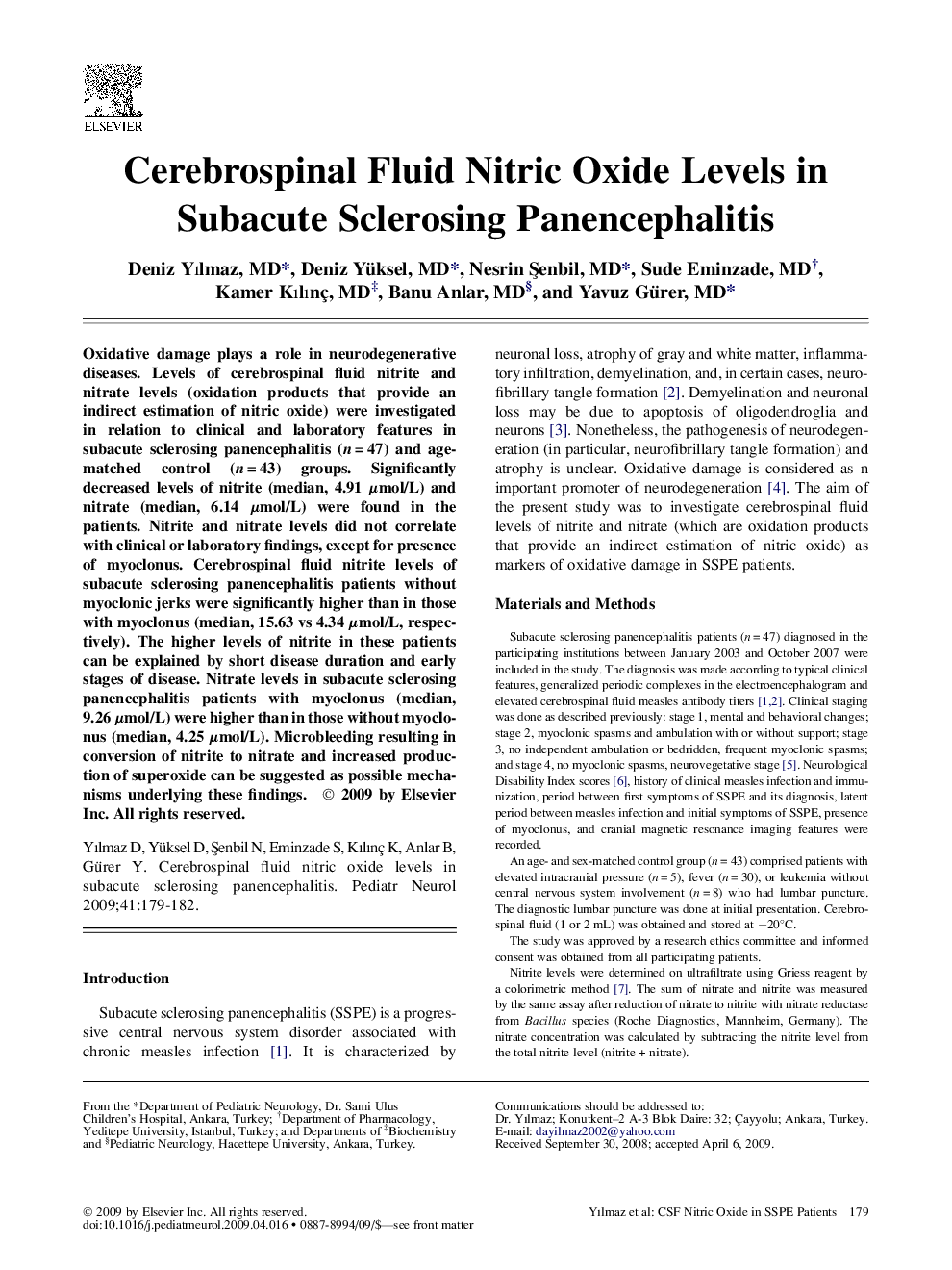| Article ID | Journal | Published Year | Pages | File Type |
|---|---|---|---|---|
| 3086534 | Pediatric Neurology | 2009 | 4 Pages |
Oxidative damage plays a role in neurodegenerative diseases. Levels of cerebrospinal fluid nitrite and nitrate levels (oxidation products that provide an indirect estimation of nitric oxide) were investigated in relation to clinical and laboratory features in subacute sclerosing panencephalitis (n = 47) and age-matched control (n = 43) groups. Significantly decreased levels of nitrite (median, 4.91 μmol/L) and nitrate (median, 6.14 μmol/L) were found in the patients. Nitrite and nitrate levels did not correlate with clinical or laboratory findings, except for presence of myoclonus. Cerebrospinal fluid nitrite levels of subacute sclerosing panencephalitis patients without myoclonic jerks were significantly higher than in those with myoclonus (median, 15.63 vs 4.34 μmol/L, respectively). The higher levels of nitrite in these patients can be explained by short disease duration and early stages of disease. Nitrate levels in subacute sclerosing panencephalitis patients with myoclonus (median, 9.26 μmol/L) were higher than in those without myoclonus (median, 4.25 μmol/L). Microbleeding resulting in conversion of nitrite to nitrate and increased production of superoxide can be suggested as possible mechanisms underlying these findings.
